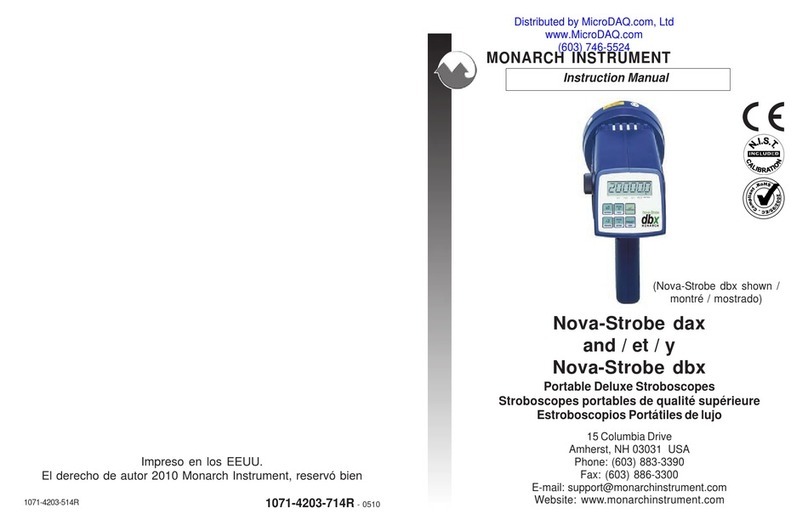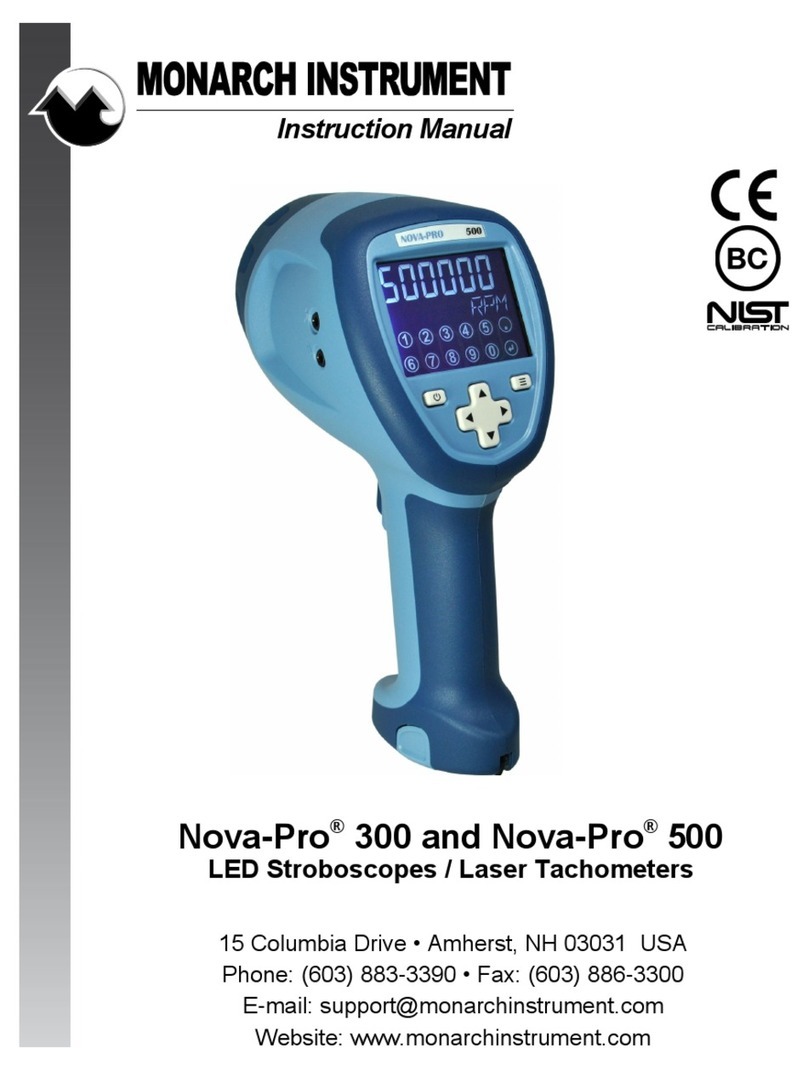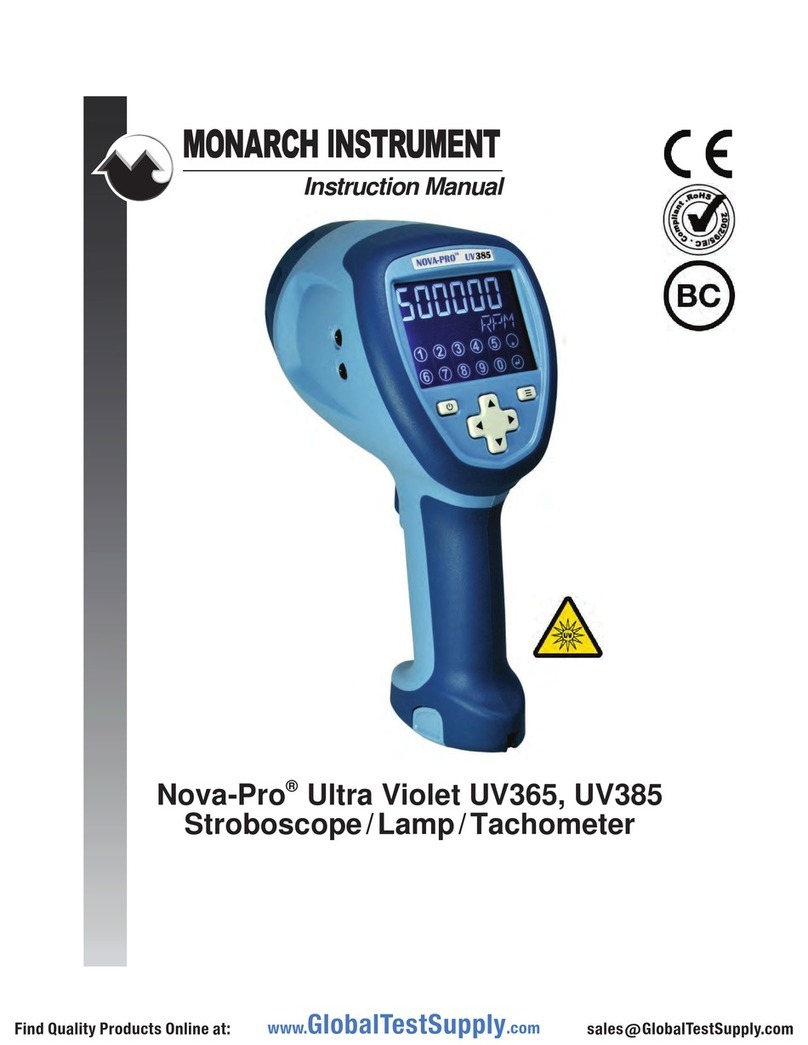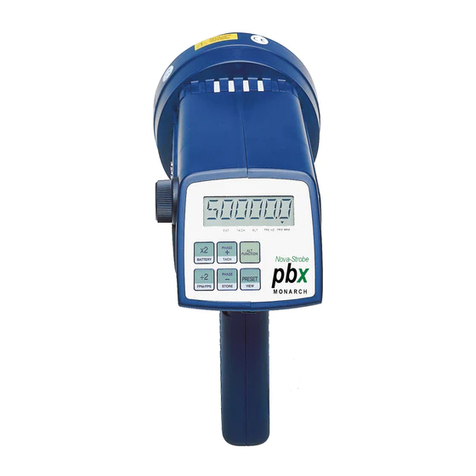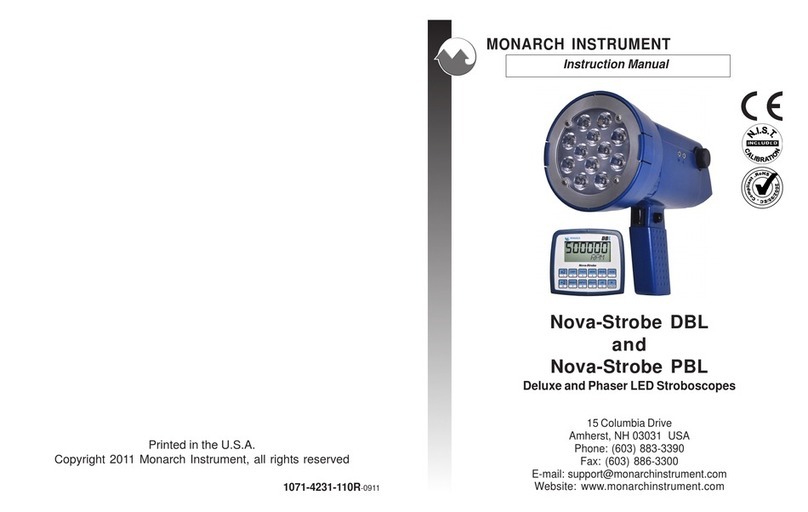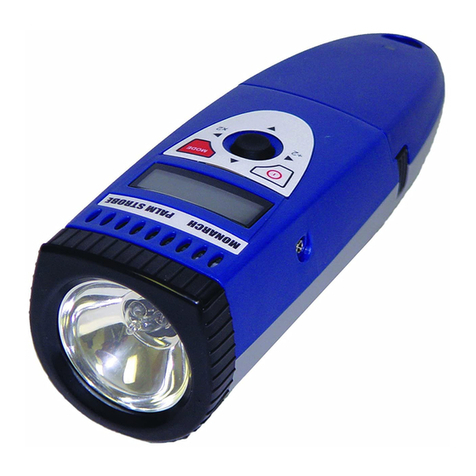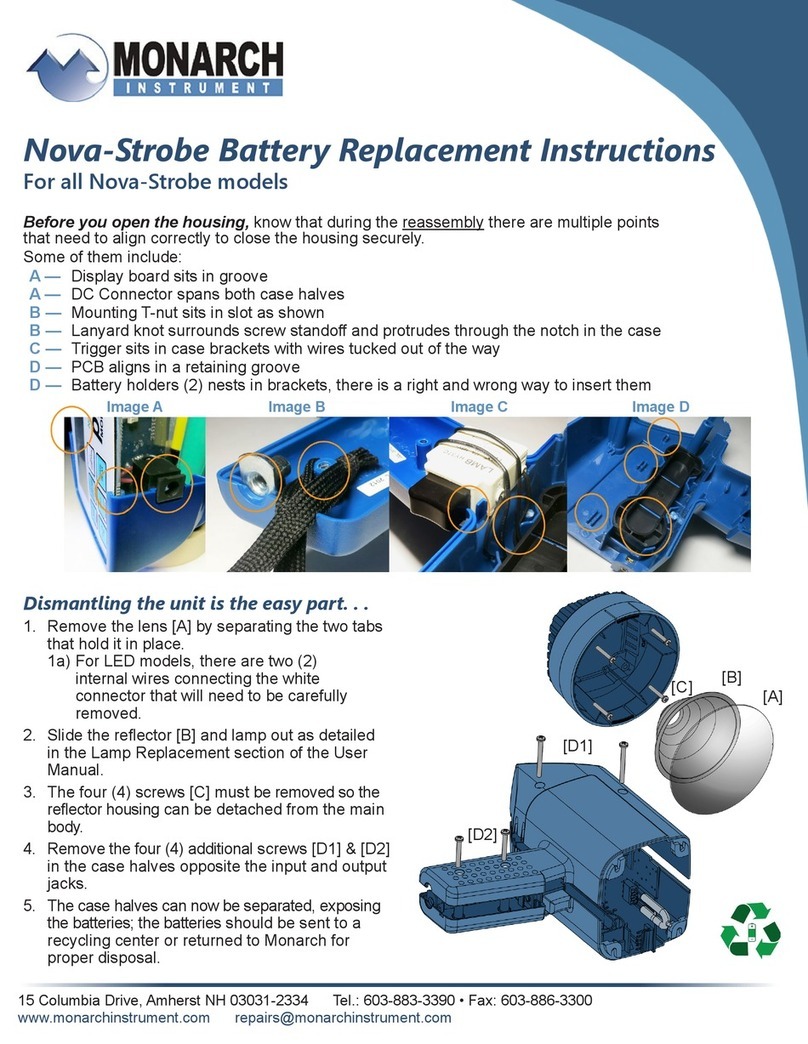
2
Strobesrelyonthe persistence of the human eye(theabilitytoremember
and image) and its response to bright light to give an apparent stop
motion image. Imagine a shaft rotating at 6000 RPM or one rotation
every 1/100 of a second (10 msec). If the strobe flashes once every 10
msec for a brief moment, the user sees the flash at the same spot in the
rotation of the shaft and the persistence of the eye remembers this until
the next flash making the shaft appeared to be stopped.As the target is
rotating there is some movement evident during the strobe flash. The
longer the flash duration, the more obvious the rotation is and this
increases the blur.
This blur can be calculated – if the shaft takes 10 msec to complete one
revolution and the strobe flash duration is 100 µsec (1/100 of a
millisecond), the shaft will turn:
(flash duration/time per rotation) x 360°, which is (.0001/.01) x 360 = 3.6°.
So you will see the shaft move 3.6°.As the flash pulse widens you will
see greater degrees of rotation which results in more blur and a brighter
perceived illumination (the LEDs are on longer so the average light the
eyes see is greater). The trade-off is blur versus brightness. One also has
to take into account tangential velocity (rotational speed) – the further
away the rotating point is from the center axis the faster the tangential
velocity and the worse the blur appears to be – it is always the same
number of degrees of rotation but the physical length of the blur gets
bigger as the point moves faster. The strobe adjusts the width of the
pulse automatically to keep the degree of rotation visible constant.
There are two methods of adjusting the flash pulse width and hence the
brightness and consequently the blur.
7
viewed is perfectly symmetrical, then the user needs to mark the object with
a piece of tape or paint in a single location to be used as a reference point.
Look only at the reference point.
If the speed of rotation is within the range of the stroboscope, start at a higher
flash rate and adjust the flash rate down. At some point you will stop the
motion with only a single reference point of the object in view. Note that at
a flash rate twice the actual speed of the image you will see two images
(reference points). As you approach the correct speed you may see three,
four or more images at harmonics of the actual speed. The first SINGLE
image you see is the true speed. To confirm the true speed, note the reading
and adjust the stroboscope to exactly half this reading, or just press the ÷2
button.Youshould again see a single image (which may bephaseshiftedwith
respect to the first image seen).
For example, when viewing a shaft with a single key way you will see one
stationary image of the key way at the actual speed and at 1/2,1/3,1/4, etc, of
the actual speed. You will see 2 images of the key way at 2 times the actual
speed, 3 key way at 3 times, etc. The FPM equals the shafts Revolutions Per
Minute (RPM) at the highest flash rate that gives only one stationary image
of the key way.
Example: Object rotating at 3000 RPM
If the speed is outside the full scale range of the stroboscope (500,000 FPM),
itcanbemeasuredusingthemethod of harmonics and multipoint calculation.
Startat the highestflashrateand adjust the flashratedown.Youwillencounter
multiple images so be aware of these. Note the flash rate of the first SINGLE
Stopped Image 1/4times 1/2 times 1time 2 times 3times 4 times
Flash Rate (FPM) 1000 1500 3000 6000 9000 12000
ActualRPM
